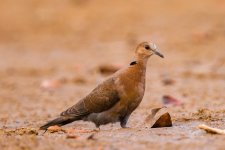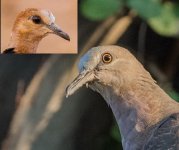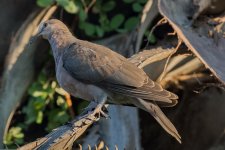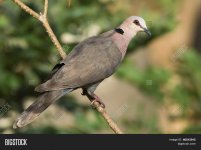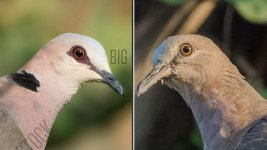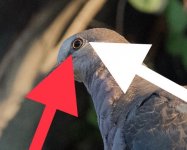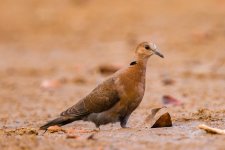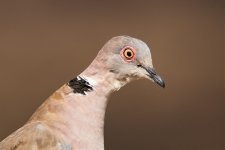I still think is a marico
is has black mottled belly,neither southern nor miombo have any black on belly and its red band with some blue&purple
feathers,that two both have no at all
it is a moulting marico
I was often stumped how variable is the colour in the field. There's no much other option than Marico in Botswana with this pattern...
Thanks both, and apologies to you both and Oleg. In my memory, Marico has always been deep maroon. Indeed the problem I remember is not some birds looking bright, but that if you don't have reasonably good light, then the whole underside of the bird looks black - belly and breastband both.
But I looked through some of my photos from various places. And I found one bird from Uganda which is definitely Marico but has a breastband that shows reddish like Oleg's bird. All the others I have look maroon, it should be said. So I apologise for doubting that this brighter colour (or appearance) is possible, since I've seen it myself.
All the physical books I have, however, show a purple-maroon breastband and describe it as such, and for all ssp/races.
Handbook of Birds of the World Alive (online, you need a subscription) gives three subspecies/races of Marico (which it insists on calling Mariqua): osiris (Ethiopia and northern east Africa), suahelicus (central and southern east Africa, west to DRC) and mariquensis (the nominate, southern Africa).
It gives an illustration for osiris and for mariquensis (but not suahelicus which we are given to understand is basically the same as the nominate). The illustration for osiris has a narrow purple-maroon (though a bit reddish) breastband. The illustration for mariquensis has a wider, red (to my eyes) breastband.
The HBW text is a bit contradictory. None of the description describes the breastband as red, reddish, or looking red sometimes.
In the main description, we are told that:
Race suahelicus is shorter-billed than nominate, male has greyer abdomen; osiris male has more violet-blue on abdomen and lower edge of throat, broader upper (violet) breastband, darker and narrower lower (maroon) breastband, female more heavily marked on throat and breast.
But if you click on the illustration of the two illustrated ssp to get their information, the description is absolutely identical for the two ssp:
base of throat ringed by narrow band of iridescent dark violet-blue, below this a purple-maroon breastband (8–10 mm deep) mixed with violet feathering; otherwise black below, including underwing-coverts and axillaries;
On looking through my photos, I realise that I have seen Marico clearly in Ethiopia, Kenya and Tanzania (all deep-coloured breastbands, and I can't see any difference between the Ethiopia and the Tanzanian birds), and Uganda (a reddish band, as I said above). I have seen the bird in Namibia (Caprivi Strip) but the male was so far away that no detail of colour was visible (so perhaps I shouldn't have commented on southern birds).
Maybe someone can say whether southern African Marico are generally redder than more northern birds, or if it's just the way the light hits, or a more individual difference between birds.





